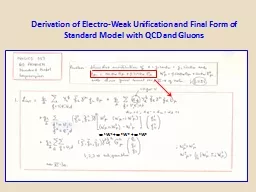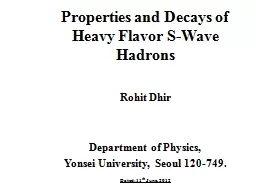PPT-Prescient Memory: Exposing Weak Memory Model Behavior by Lo
Author : liane-varnes | Published Date : 2018-01-19
Man Cao Jake Roemer Aritra Sengupta Michael D Bond 1 Parallel Programming is Hard 2 Parallel Programming is Hard Sharedmemory 3 Main Memory CPU Cache CPU Cache
Presentation Embed Code
Download Presentation
Download Presentation The PPT/PDF document "Prescient Memory: Exposing Weak Memory M..." is the property of its rightful owner. Permission is granted to download and print the materials on this website for personal, non-commercial use only, and to display it on your personal computer provided you do not modify the materials and that you retain all copyright notices contained in the materials. By downloading content from our website, you accept the terms of this agreement.
Prescient Memory: Exposing Weak Memory Model Behavior by Lo: Transcript
Download Rules Of Document
"Prescient Memory: Exposing Weak Memory Model Behavior by Lo"The content belongs to its owner. You may download and print it for personal use, without modification, and keep all copyright notices. By downloading, you agree to these terms.
Related Documents














